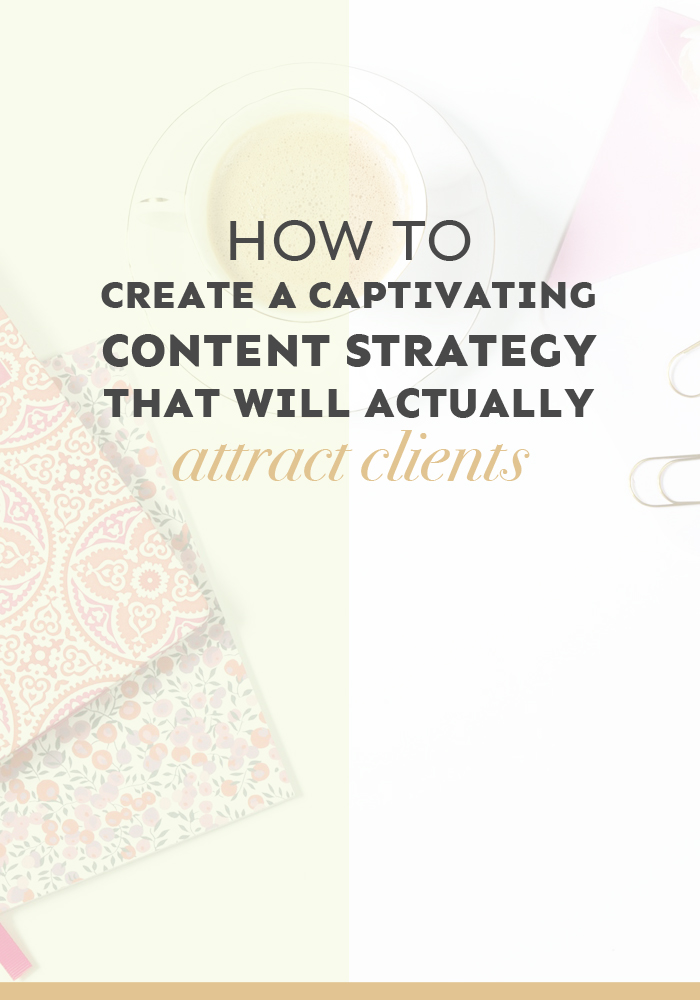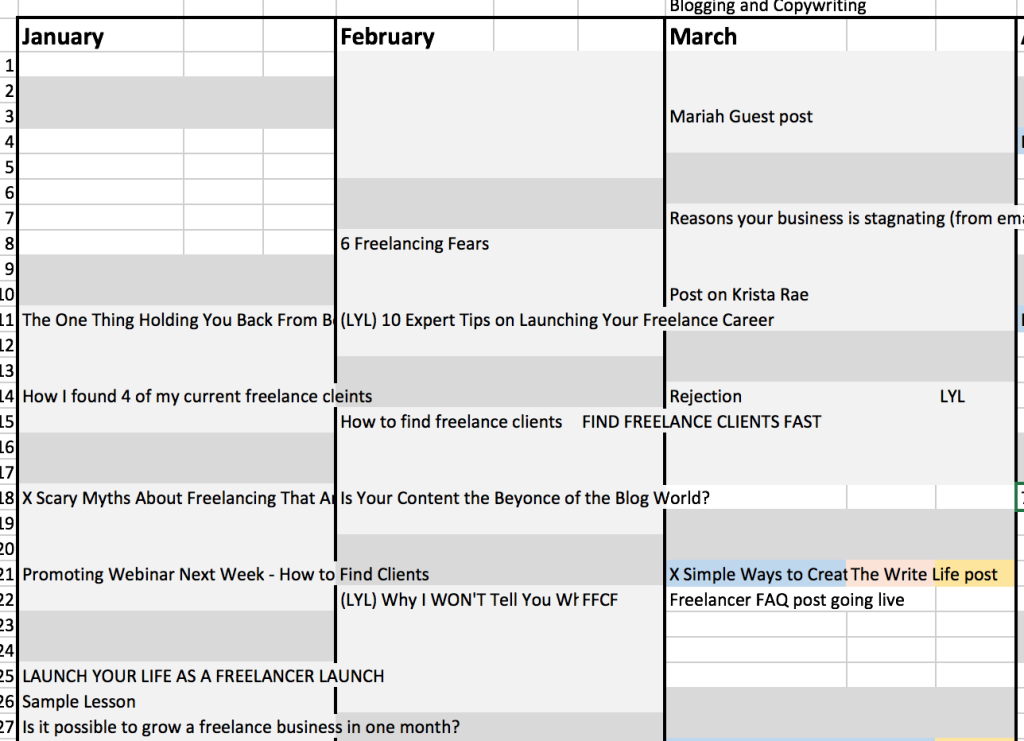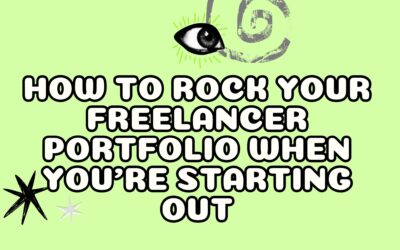In the past three months, readership on Wanderful World has increased by 50% (up from 10,000 readers a month to just over 20,000 readers a month – you guys rock!).
This isn’t a coincidence. Oh heck no. And, while it hasn’t been a scheming ploy to draw you all in, I have been working hard to create a content strategy that resonates with you. Content you want. Content that can really help you improve your freelance business.
Back in November, I sat down for an entire morning and wrote out a content strategy. It included the kinds of posts I wanted to publish (long-form, actionable pieces rather than short snippets of vague advice), and it included the kinds of topics you struggle with the most (landing clients, managing your time, and breaking into freelancing in the first place).
Before I really started considering what you guys WANT and NEED, I kinda winged it. I wrote about what I THOUGHT you wanted to hear, what other people in my niche were writing about, and whatever tickled my fancy at the time.

Now? It’s all about you. Your questions, queries, and stories drive every single piece of content on Wanderful World.
And it’s working! Since I started implementing this new content strategy, there’s been a 300% increase in email subscribers and, like I said before, a huge increase in readership (not to mention a fair few client leads dropping into my inbox every now and again).
It really was just a case of switching things up and changing my focus from what I thought you wanted to read to want you ACTUALLY wanted to read.
And guess what? You can do exactly the same on your blog to attract your ideal clients.
All it takes is a nifty content strategy that’ll do all the hard work for you. And today I’m going to show you how to create one that gets clients excited about what you do and, more importantly, encourages them to get in touch with you.
Why You Need a Content Strategy
I winged it for almost four years without a content strategy. That’s a hell of a long time to not really know what you’re doing and to sling a quick blog post together in record time week after week.
And my readership suffered because of it. Traffic remained at a dismal level for what seemed like an eternity, and I couldn’t seem to create a connection with my readers (a.k.a. I received barely any emails and about 20 people signed up to my email list in two and half years – embarrassing or what?!).
But this isn’t the only reason having a content strategy is the best thing since sliced bread. It also:
-
Makes planning blog posts easier
Before I had a strategy in place, I scrabbled around each week trying to come up with a blog post idea that wouldn’t fall flat on its face (even though it did most of the time, anyway).
Since implementing my content strategy? Well, it’s just so much easier to know what I’m going to write about and when. That means no more late night Googling for topics, and no more churning out short, 400-word posts to fill the space.
-
You’ll attract the RIGHT people
During that extended flailing around stage, I wasn’t really focusing on WHO I was targeting, because I was so busy trying to come up with blog ideas.
I wrote about this, I wrote about that, and I wrote about everything in between, which meant I resonated with no one. Having a tight content strategy in place will help you reach the people that matter to your business (and we’ll talk about how in a bit).
-
You can show off your expertise
Consistent blogging and a content strategy that’s watertight helps potential clients view you as a leader in your field. Why? Because you’ll be authoritatively talking about specific topics over and over again.

Okay, so let’s get stuck in to the ‘how’ shall we?
Step One – Define Your Clients and Discover Their Pain Points
It’s really important to know exactly who your ideal client is (a.k.a. the brands you dream of working with). You can figure out how to hone in on your ideal client with the help of this post.
Once you know exactly who it is you want to target, it’s time to discover their pain points. We’re talking what makes them tick, what they can’t get their head around, and what they need the most help with.
For example, as a copywriter, many of my clients have trouble writing persuasive content that connects with their audience. This is a pain point.
But how do you find out what your client’s pain points are?
While it can be easy to come up with a few problems that you THINK your ideal clients might have off the top of your head, it’s much easier to do a bit of research and find out what they’re ACTUALLY struggling with. Ya’know, the things that are really getting them down.
How do you do this?
Go out and find them online. Track them down on social media or on forums and listen to the questions they’re asking. Join Facebook groups filled with your ideal client and look out for the problems that crop up the most.
If that fails, you can go right ahead and ASK them. Simply shoot off an email to five or so of your dreamiest clients and ask them what they’re struggling with. No sales pitch, no offering of services, just simple questions. Listen carefully to their responses because you’re gonna need them for the next few steps.

Step Two – Create Themes Around Their Pain Points
Let’s use my ideal clients as an example. I work with start-ups, entrepreneurs, and small lifestyle businesses who want to create connections with their audiences and build communities around their services and products.
Their pain points?
- Finding a voice that speaks directly to their ideal customer
- Having enough time to create decent content
- Standing out among the top players and the general online noise
- Creating website copy that is connective but that also converts
So from these few pain points (and, remember, your clients might have a lot more), we can determine a few theme ideas:
- Content creation
- Sales speak that’s not sleazy
- Standing out
From this, I can narrow things down to three top themes:
- Content creation
- Sales
- Promotion
Within these three themes, I should be able to cover a range of pain points that my ideal clients might have.
When you’re looking at your client’s pain points, really dig into the baseline reasons for them – what would finding a distinctive voice mean to them? How would having copy that converts change their business?
Step Three – Idea Generation
Now you should have between 3-5 themes that cover the main pain points your ideal clients face, and you’ll also have some common questions and queries from the research you did in step one.
Next, it’s time to bring all this together and brainstorm some topic ideas. Use the input you had from forums, social media, and direct client contact to create multiple blog post ideas, and use your themes to guide you and keep things streamlined.
For example, many of the readers here email me asking how they can land their first client.
From this I can come up with a string of ideas that could eventually be turned into a series, or become part of a bigger post. I might consider writing:
- 3 Easy Ways to Land Your First Client
- How to Use Twitter to Land Your First Client
- Get Started Freelancing: What to do When You’ve Found Your First Client
- Are Job Boards a Good Place to Find Clients?
Already, I have four ideas just off the top of my head (I might even go ahead and write some, so let me know if any interest you!).
Try and come up with about 10 blog post ideas for each theme, and then you can start narrowing them down, weeding out the weak ones, and combining ideas to create stronger posts.

Step Four – Create the Content
Now it’s time for the inevitable – actually creating the content. This can often seem overwhelming, especially when you’re just starting out, you have tonnes of ideas written down, and you don’t know where to begin.
My advice? Start from the top.
Pick one blog post idea from each theme and outline them with an introduction, a middle (including any steps, bullet points, and main features), and a conclusion.
While you’re writing, consider:
- What do you want your ideal client to get out of it?
- What will be the key thing they learn and take away with them?
- How will it change what they do with their business?
- What do you want them to think about/feel while they’re reading it?
And finally, you want to think about what you want your call to action to be – this is a really important part of any content strategy.
This is the action you want the reader to take when they’ve finished the post.
Do you want them to sign up for something? Do you want them to get in touch with you? Do you want to challenge them to do something?
Every post needs a call to action, so plan this out carefully while you’re writing the post.
Step Five – Create a Calendar that Tackles Your Themes
One of the best ways to grow a consistent audience and to start getting consistent enquiries from clients is to be, well, consistent.
That means you need to stick to a schedule. Firstly, this will help the writing process (you’ll know what you need to write about and when), and it will encourage readers to think of you as professional and a leader (because you always show up on time and deliver the goods).
I use a simple Excel spreadsheet to plan my content strategy, and I try and plan two months in advance.

You can create yours in whatever way you like, whether you’re a pen and paper kinda person or a perfectionist who needs to have everything tightly tapped into a management system.
This is where the themes come in handy, as you can spread them out over the month, have specific days for each theme, or bulk similar blog posts together to create a narrative.
See, creating a content strategy doesn’t have to be that hard! In fact, it can be pretty fun once you get going. I don’t know about you, but I really enjoy brainstorming topic ideas – I could do it all day (and some days I do!).
The next step is creating a content marketing strategy, which delves into the methods you’ll use to get your blog posts out there and in front of the right people.
If you’re interested in these next stages, you’re going to love the new course I have coming out in a couple of weeks. Stay tuned for more information – it’s going to be a good’un!
Your Turn!
In the meantime, I want to hear from you! Do you have a content strategy? What does it involve? If not, do you think you’ll start using one in the future?
Want more clients?

Find Freelance Clients Fast is a FREE 7-day mini-course that will show you:
- The four elements of a profitable freelance business
- How to grab the attention of prospects
- Where to find high-paying clients
- The number one way to land clients quickly
You in?!






Really cool tips. I’ve been blogging for 9 years now and without realizing it (there were no strategies like this back then), I just wrote about what I was passionate about and tried to help my readers solve their problems. Needless to say I got a lot of clients and also people interested in my new freelancing course. So it’s clearly a great way to promote your business and get clients.
Wow, 9 years! That’s so impressive, Ramona! I’m really glad things are working out for you, and I completely agree – a great content strategy can be a lucrative way to find clients.
This is such a fantastic post, Lizzie! I’ve been feeling a little stuck with content ideas so I’m going to work back through this post right now. Thanks for sharing such great information!
Yay, thanks, Holly! I hope it helps you – let me know how it goes 🙂
Awesome tips. I’ve been posting for awhile without a plan and recently made the change to have a strategy. It really makes all the difference. I do struggle with following my calendar because I have so many ideas, but I’m working on it.
Thanks, Ariona! It really does make a difference, doesn’t it?! YES, I have SO many ideas, too, and I swear I get at least 10 more every day. I try and spend an hour or so each week just honing down my ideas, merging some together, and generally thinking about which ones would serve my audience best.
Lizzie – you have done it again – another excellent, long-post form. I can certainly see the changes in your strategy and it’s something I’ve been working on this year as well. I blogged for 2 years without a focus because, well, I love writing. Now that I have focus I’ve certainly seen the views and share increase on my blog as well! That’s for sharing your strategy!
Angela J. Ford recently posted…Is your Brand Speaking for You?
Ah thanks, Angela, you’re too kind! I was exactly the same – I loved writing and a blog was the perfect outlet for that, but it was disheartening when I was pouring everything into posts that weren’t getting read. Now I have a strategy and I can still pour everything into posts, but at least I know I’m helping someone at the other end 🙂
These are some great tips! So true for me too, used to write what I though people wanted to hear – it’s amazing when you hit the right points how things change. 🙂
Thanks, Janet! Exactly – you can almost see the shift when you make the change, right?!